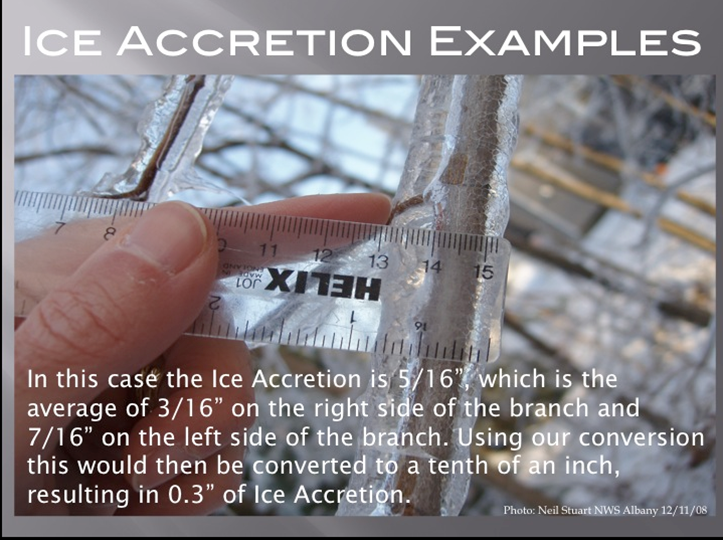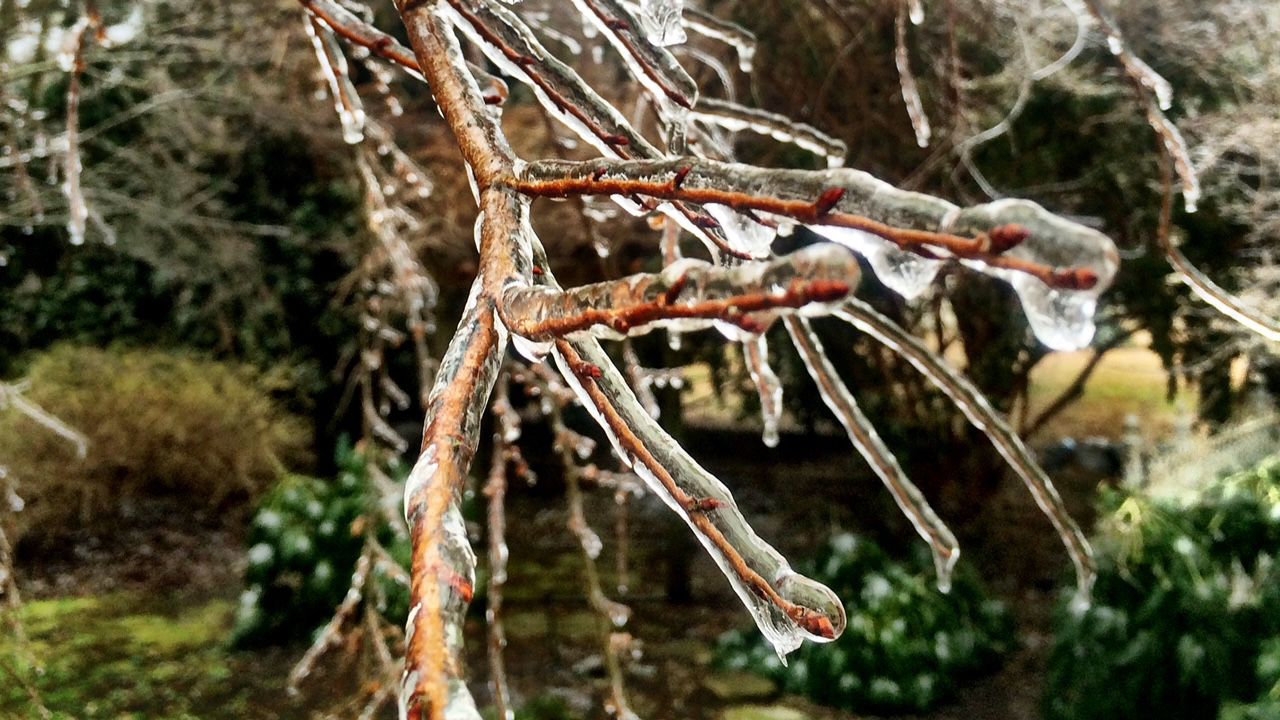Freezing rain is arguably the most dreaded type of winter weather to experience, but storm reports during these events are invaluable.
Ice forms from freezing rain, when raindrops fall through a layer of air that's warmer than freezing that is situated above a shallow layer of subfreezing air down at the surface. The water freezes on contact with any surface it hits, forming a buildup of ice.
Measuring ice to submit a report can be tricky. Ice does not form evenly on the surface it accretes on.
Due to gravity, water will often run to the bottom of an object, such as a tree branch, before freezing. Wind can also make ice form unevenly. Because of these effects, one side of an object will have thicker ice than the other.
There is a specific method to measuring unevenly formed ice. Grab a ruler and something to write your measurements down.
Find an object outside that is covered in ice and out in the open. A small tree branch is usually the best option. Get into a position where you can see both the thinnest and the thickest part of the ice.
Start with the thickest part of the ice on the object. Take your ruler and measure from the edge of the object to the edge of the thickest part of the ice. Write down the thickness.
Next, do the same with the thinnest part of the ice, going from the edge of the object to the edge of the thinnest part of the ice. Record that value, add it to the previous one, divide by two, and you have a value for ice accumulation.

It’s a simple measurement to make. I’d say the hardest part would be to find a good object to measure, if anything. This page from the National Weather Service has more information.
Is the occurrence of freezing rain interesting from a meteorological standpoint? Sure, the process of how ice forms from freezing rain is interesting. Beyond that, I find it to be dreadful.
The first thing is that it is very difficult to predict. From my experience, computer forecast models almost always overdo how much ice will accumulate. It takes plenty of skill and experience to become good at forecasting ice totals and coming up with more realistic numbers. A big part of forecasting is the skill of pattern recognition, which takes several years to acquire.
I also dread freezing rain for the same reasons many others would come up with: it creates problems. Ice-covered surfaces lead to bad spills on the driveway or sidewalk. People get hurt! Car accidents are pretty much a guarantee in an ice storm. All it takes is a glazing of ice to create slippery roads.
Damage is common during freezing rain events. Sometimes trees get so covered in ice that they bend and eventually break. Downed trees and limbs lead to downed wires, which means power outages.
Freezing rain is understandably a misunderstood event, which always concerns me. When it’s raining, you don’t know if it’s freezing rain until you see ice accumulating on the ground. The precipitation still looks like regular rain drops during these events, so you could be caught off guard if you’re not aware of the risks on a given day.
When we tell people how much snow is going to fall, they usually have a good understanding of how they’ll be impacted. For example, 3 to 6 inches of snow is enough to plow and shovel. Roads will be snow-covered and slick. But if we tell someone to expect one or two-tenths of an inch of ice, it seems like a small number and doesn’t really mean much.
Anything under a tenth of an inch is usually considered a glazing, and a quarter-inch or more is usually where you see significant damage.
These events may arguably be dreadful, so be prepared and weather-aware and you’ll be able to manage the next time some freezing rain comes your way.



